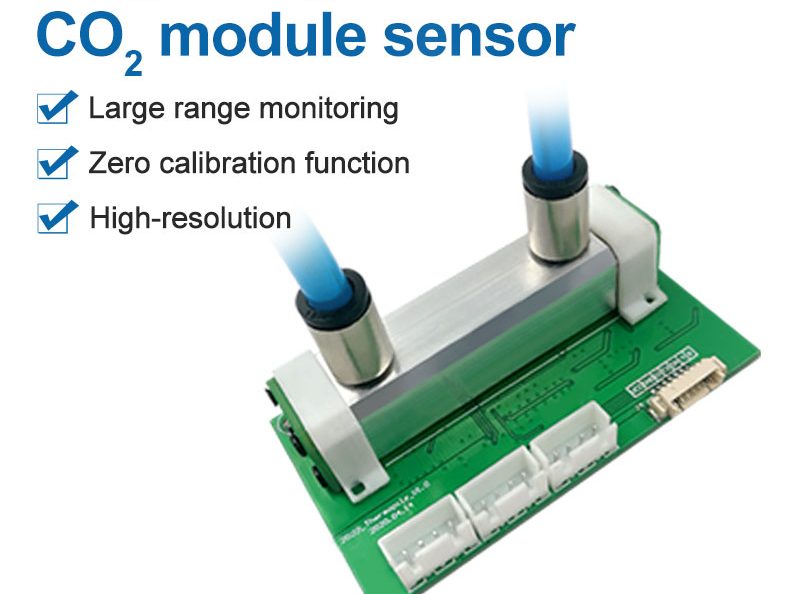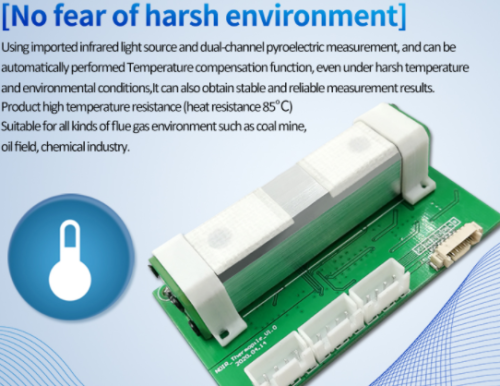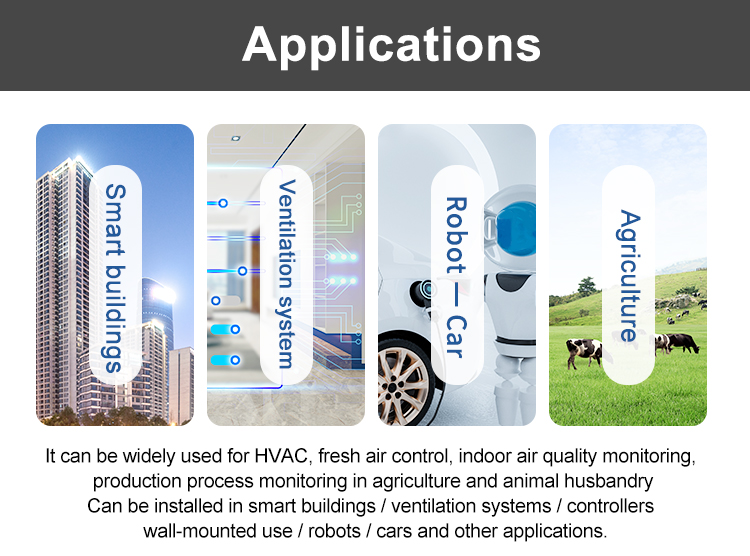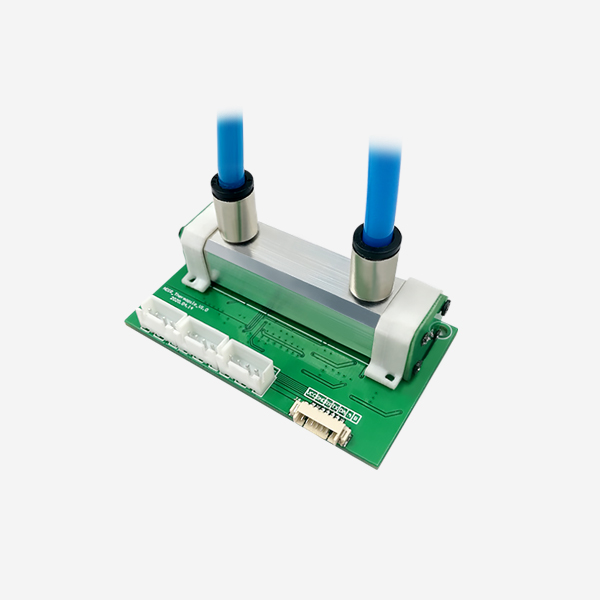Non-Dispersive Infrared (NDIR) sensors are widely used for gas detection due to their numerous benefits, including:

High Sensitivity: NDIR sensor are highly sensitive to specific gases, making them effective for detecting low concentrations of target gases in the environment.
Selectivity: NDIR sensor can design be highly selective for a particular gas, minimizing the potential for interference from other gases present in the environment.
Low Power Consumption: NDIR sensors typically require low power consumption, making them suitable for battery-operated and portable gas detection devices.
Long-Term Stability: NDIR sensors offer long-term stability and reliability, ensuring consistent and accurate gas detection over extended periods of time.
Fast Response Time: NDIR sensors provide rapid response times, enabling quick detection of changes in gas concentrations and facilitating timely action in response to gas leaks or environmental hazards.
Wide Detection Range: NDIR sensors can detect a broad range of gases, including carbon dioxide (CO2), carbon monoxide (CO), methane (CH4), and other hydrocarbons, making them versatile for various gas detection applications.
Low Maintenance: NDIR sensors generally require minimal maintenance, contributing to cost savings and operational efficiency in gas detection systems.
Environmental Compatibility: NDIR sensors are environmentally friendly, as they do not rely on consumable chemicals or materials for gas detection, reducing the environmental impact of gas monitoring activities.

Ndir gas sensors were introduce as a way to account for some of the drawbacks of catalytic sensors. Initially developed for use in the mining industry, catalytic sensors have been used for over a century. Catalytic sensors measured a temperature difference between two beads – an inert one and one coated in a chemical catalyst. The temperature differential information could identify the gas concentrations of the hazardous gas being measured. Unfortunately, these sensors have limitations. They:
Are prone to poisoning
Require high amounts of power
Have a limited life expectancy
Can deliver faulty readings if calibrated to a single target gas
Do not function in low-oxygen environments
The purpose of the development of the infrared sensor
Infrared sensors were develop to address these drawbacks. These sensors use infrared light to gauge the different wavelengths of hazardous gases. Properties of some gases absorb light in certain wavelength ranges or bands. However, that is not the case for the main components of air, such as nitrogen, oxygen, and argon.

Infrared light is absorbed as a target gas passes through an active filter. The infrared light that does not interact with the target gas molecules goes through a reference filter.
Essentially, two infrared beams of different wavelengths are guided into the measuring chamber to hit two detectors. These are the measuring and reference detectors. If the absorption of a gas weakens the measuring beam, the reduced intensity corresponds to the gas concentration. A signal processing mechanism determines the difference between the light intensities to report the gas concentration to the user.
Gases that can be detected by infrared include all heteroatomic gases such as carbon dioxide and hydrocarbon compounds. They are frequently used for sensing carbon dioxide, carbon monoxide. Additionally, unlike catalytic gas sensors, they are not susceptible to poisoning. They can detect combustible gases in low-oxygen environments. And they require less power to operate.
At the time of their introduction, infrared gas sensors represented a giant leap forward in technology. And they addressed many – but not all – of the key disadvantages of using catalytic gas sensors. Unfortunately, infrared gas sensors have many limitations, too. Some of which can be dangerous to the user if they are not aware of using this type of gas sensing technology.
Overcoming the Limitations of Infrared Gas Sensors
The reality is that NDIR sensors and non-dispersive infrared sensors work well for some applications. But under many circumstances, these sensors have extreme limitations. Unfortunately, these limitations can result in unsafe conditions for anyone in the vicinity.
Combustible and hazardous gas detection shouldn’t be uncertain. It’s simply too risky to rely on methods that fall short of delivering an accurate output reading every time they are used. Fortunately, recent technological advances in gas detection have provided a new method. Molecular characterization spectrometers address the limitations of infrared and catalytic gas sensors.
The NDIR gas sensors remain reliable and accurate across nearly all environmental conditions. They also require no calibration and are impervious to poisoning.
Due to these benefits, the NDIR gas sensors often have a lower total cost of ownership than alternative gas sensing technologies. And they can detect over a dozen gases simultaneously, including hydrogen. This sensor overcomes the dangers of using infrared gas sensors to keep your workplace and employees safe. And there is nothing more important than that goal.
